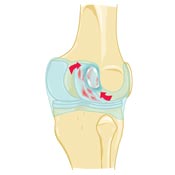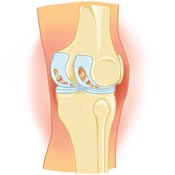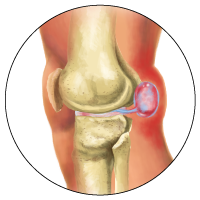Baker's Cyst Causes

Severe swelling of the knee causes a Baker's Cyst to form. The swelling is a result of excess synovial fluid, which is the fluid that keeps the knee joint lubricated. Synovial fluid is a clear liquid that normally circulates through the cavities in your knee joint. Sometimes, the knee produces too much fluid. As the pressure increases, the fluid is forced to the back of the knee, where it creates a bulge.
Since the knee is a complicated joint, it can be injured easily. According to the American Academy of Orthopedic Surgeons, about 19.4 million Americans saw their doctors about knee problems in 2003, making it the most common reason for seeing an orthopedic specialist.

A Baker's Cyst may form after damage to the joint capsule of the knee. The weakening of the joint capsule in the damaged area can cause the small sac of fluid to form. This can lead to a bulging of the joint capsule, much like what occurs when an inner tube bulges through a weak spot in a tire. The cyst may become larger over time.

In adults, Baker's Cyst typically results from an underlying problem in the knee. In active people, this may be a tear in the cartilage that is supposed to keep the bursa within the knee joint. Inflammation in the joint produces excess synovial fluid in the bursa, which increases pressure in the sac, distends it, and forces it out of the joint. In children, Baker's Cyst can occur when a normal bursa forms an abnormal connection to the knee joint.

A Baker's Cyst can actually be a response to other conditions that cause swelling in the knee joint. This swelling is most often from problems of osteoarthritis or rheumatoid arthritis in the knee joint. It can also be caused by trauma, either from a direct blow to the knee or from repetitive activities that lead to overuse in the joint. A Baker's Cyst is not a form of a blood clot in the leg, but can be mistaken for a blood clot.

